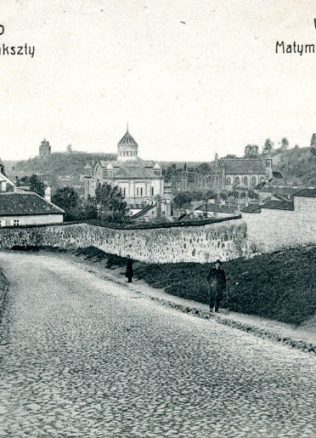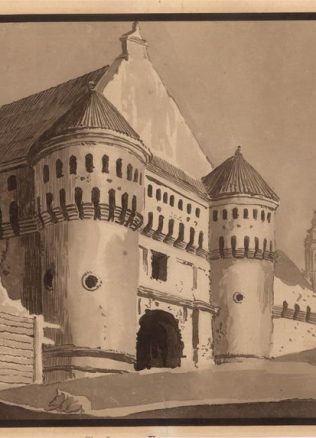Gate of Dawn
Of ten city gates, only the Gate of Dawn survived to our days. Throughout the centuries, the gates had many names, what symbolizes the changing function and meaning of the Gate of Dawn to the city.
In 1514 the gate was mentioned as the Medninkai Gate, as it led to Medninkai village. At the end of the 16th century, gates had been called Sharp gates (lat. Porta Acialis; pol. Ostra brama). Some historians associate this name with Ašmena town (Ашмя́ны, Oszmiana), which name derived from Lithuanian word “Ašmuo”, which means a sharp blade. Probably, this Lithuanian word was directly translated to Latin and Polish languages. When Lithuanians began to call the gate as Gate of Dawn (lit. Aušros vartai) is unknown.
At the beginning of the 16th century, the gate had many elements that characterize Gothic architecture: small narrow arched openings and sharp upward rising niches. At the end of the 16th century, the gate was reconstructed and gained its current look and forms.
In 1621-1626, the Order of Discalced Carmelites began in the vicinity of the gate. At first Carmelite monastery was built, a little bit later – St. Teresa’s Church was completed. In 1671, a chapel was built at the gate, which in turn of 18th and 19th centuries gained its late classicism look.
At the end of the 17th century, the chapel became home to the miraculous icon of The Blessed Virgin Mary Mother of Mercy, which turned the Gates of Dawn into a place of worship, to this day attracting thousands of pilgrims to these gates.



